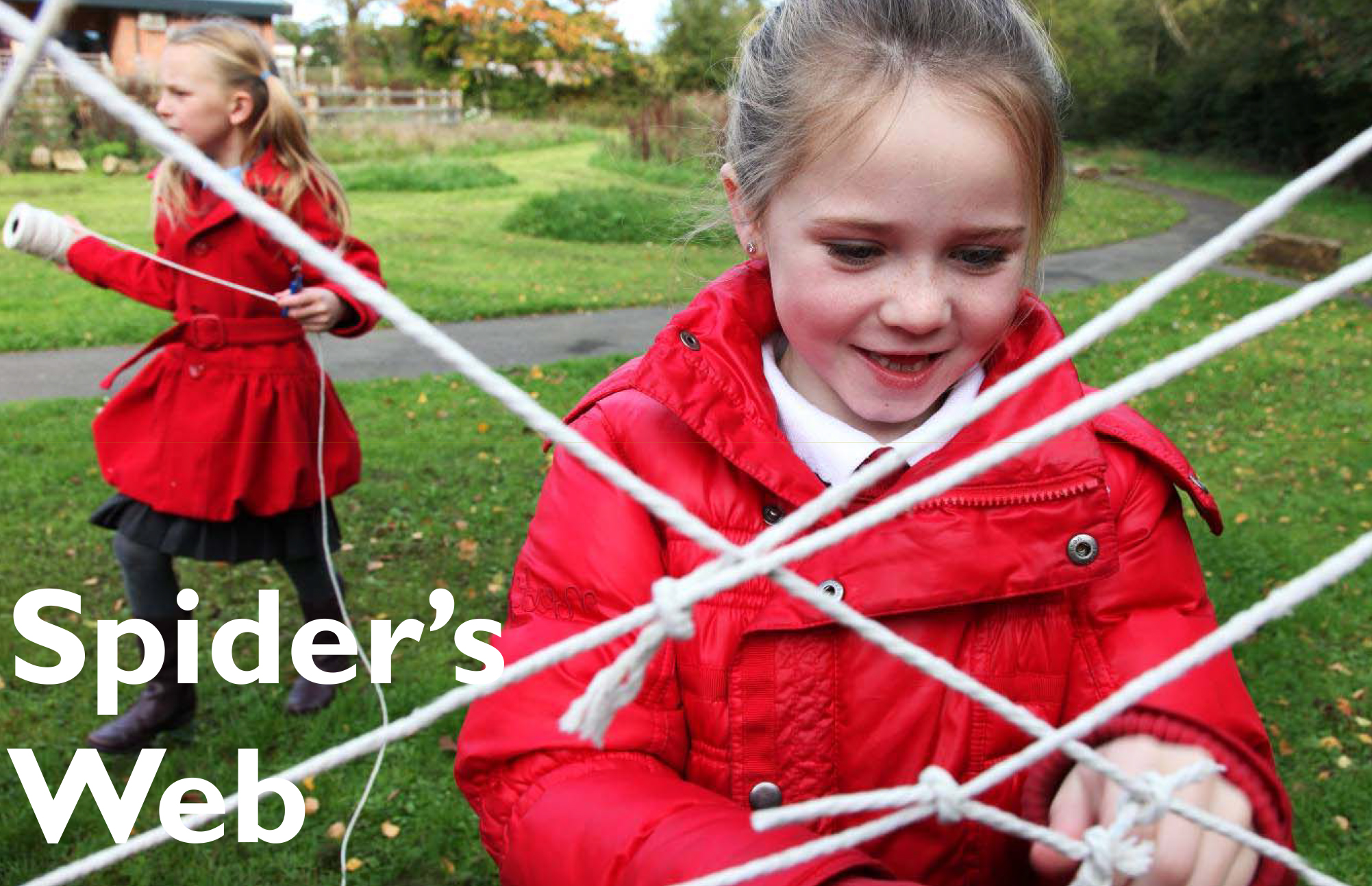In this activity, participants work in a group to recreate spiders’ webs as large string sculptures. This encourages collaborative working and can have the participants think closely about the forms used in webs.
The Activity
Artform/Type of Activity
- Sculpture/ installation
Objectives/Outcomes
- To develop understanding of complex natural forms such as spiders’ webs
- To develop an understanding of how simple repetitions can make complex forms
- To work collaboratively
- To develop confidence in art
- To play/ experiment with scale
- To look at the work of an international contemporary artist – Tomas Saraceno
Materials Required
- Images and studies of spiders’ webs and similar natural forms
- Images of works by Tomas Saraceno (available on the internet)
- String/ yarn – at least 2 rolls per group of 4 participants or so
- Scissors/ knives
- Camera/s to photograph the end product
Space Requirements
Installation: ideally, find an outdoor space where there are supports for the ‘web’ close enough together – these could be trees, wooden poles, fencing etc, which can be safely joined together with string. If no such large space is available, then smaller scale webs can be created within the spaces of a fence or similar.
An important consideration will be whether the intention is to use an environmentally friendly string/ yarn and to leave the web in situ once it has been constructed, or not. These decisions will be governed by a host of factors, including ownership and use of the site, and all these factors together will determine eventual size and situation.
Please note: if your intention is to make web/s in natural spaces and then to remove them, please be careful to get permissions, to act sensibly around possibly irritant natural materials, to avoid damage to living things and existing features, and to remove everything you brought with you from the site when the exercise is over.
Activity Instructions
- Look at (images of) and discuss spiders’ webs and similar natural patterns. Why are they there, how are they made, what are they made of, are the patterns/ forms regular or random etc.
- Look at images of works by Tomas Saraceno; explore the connections, similarities, dissimilarities with naturally occurring webs.
- You may want a ‘practice run’ at creating web/s indoors before you try it at a larger scale outdoors. If so, divide the participants into groups of about four or five and let them arrange e.g. four chairs as the web supports. Give each group a ball of wool (and possibly scissors). Each group makes a web, taking turns with the ball of yarn, exploring how it works, how to take turns, how easy/ difficult it is to keep patterns regular etc.
- Review the webs. What was easy or difficult? How might they be improved?
- Move to intended installation space.
- Create the webs. Long pieces of string can be used to bridge the gaps between trees/ branches/ fences etc, creating the basic framework. Shorter pieces can be cut/ looped to interconnect the ‘scaffolding’. Tie the knots tightly and keep the yarn taut to create stronger, rigid webs. Try to replicate the natural patterns that have been looked at in preparation.
- The techniques themselves are simple, but the overall effect can be very striking.
- The effect of weather on the webs can be exciting – in particular rain and frost can add to the visual impact and offer scope for more photography. Also, where webs can be left in situ, it will be possible to document growth/ interaction from nearby plants, and eventual decay.
Curricular Links
Links to Art and Design through: observation; use of materials; sculpture/ installations
Links to Science through: spiders; natural patterns; habitats
Links to Mathematics through: geometric patterns; Fibonacci; fractals
This resource was designed as part of the Green TV project.
PDF Work Sheet
See our A to Z of creative activity resources here.
Funded By
The creation of this resource was made possible by funding from the Heritage Lottery Fund.

